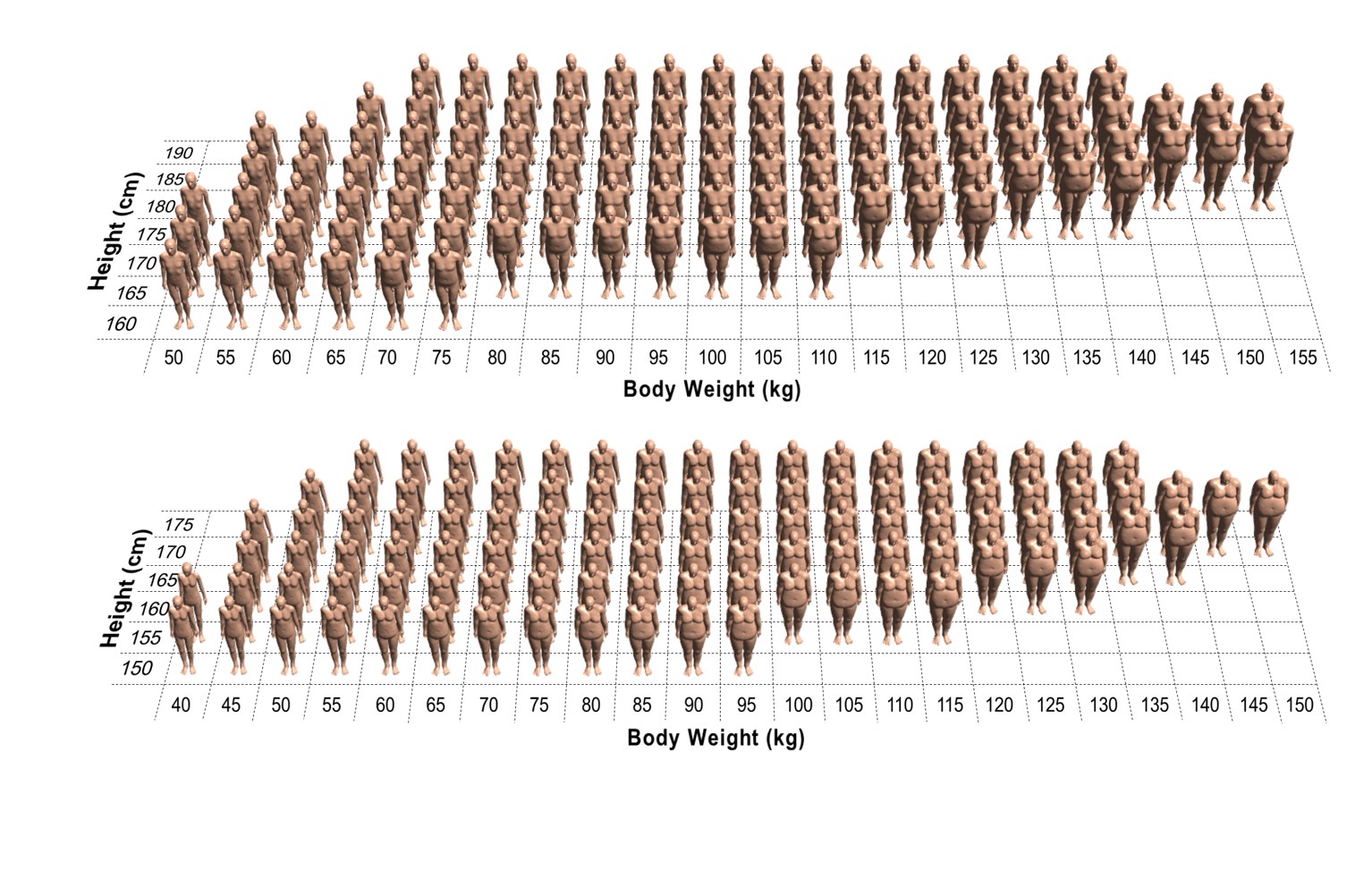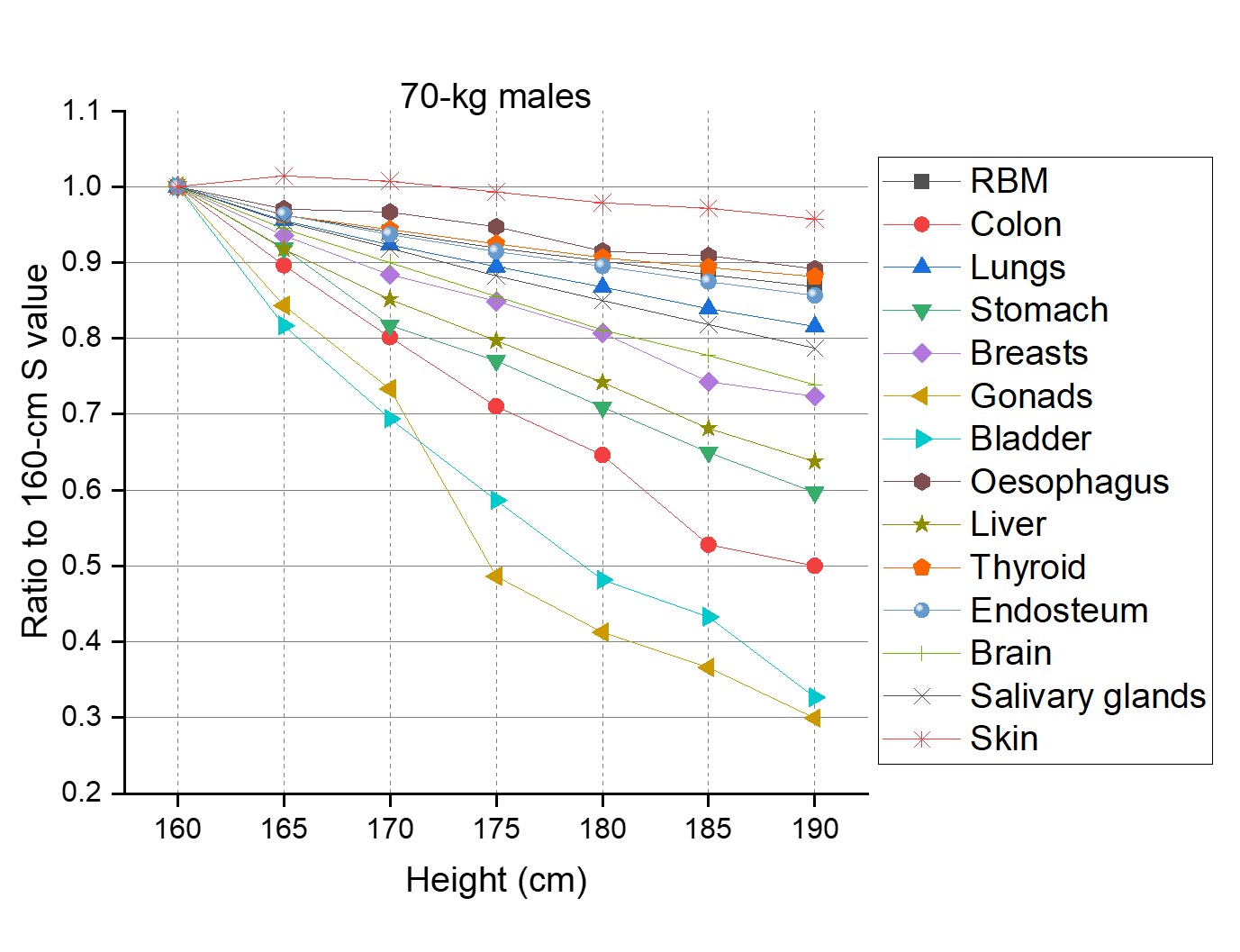글로벌 연구동향
방사선방호 및 안전
- [J Radiol Prot.] Body-size-dependent Iodine-131 S values
미국국립암연구소 / 염연수*
- 출처
- J Radiol Prot.
- 등재일
- 2020 Oct 12.
- 저널이슈번호
- doi: 10.1088/1361-6498/abc053. Online ahead of print.
- 내용
Abstract
In a recent epidemiologic risk assessment on late health effects of patients treated with radioactive iodine (RAI), organ/tissue doses of the patients were estimated based on iodine-131 S values derived from the reference computational phantoms of the International Commission on Radiological Protection (ICRP). However, the use of the S values based on the reference phantoms may lead to significant biases in the estimated doses of patients whose body sizes (height and weight) are significantly different from the reference body sizes. To fill this critical gap, we established a comprehensive dataset of body-size-dependent iodine-131 S values (rT thyroid) for 30 radiosensitive target organs/tissues by performing Monte Carlo dose calculations coupled with a total of 212 adult male and female computational phantoms in different heights and weights. We observed that the S values tend to decrease with increasing body height; for example, the S value (gonads thyroid) of the 160-cm male phantom is about 3 times higher than that of the 190-cm male phantom at the 70-kg weight. We also observed that the S values tend to decrease with increasing body weight for some organs/tissues; for example, the S value (skin thyroid) of the 45-kg female phantom is about 2 times higher than that of the 130-kg female phantom at the 160-cm height. For other organs/tissues, which are relatively far from the thyroid, in contrast, the S values tend to increase with increasing body weight; for example, the S value (bladder thyroid) of the 45-kg female phantom is about 2 times lower than that of the 130-kg female phantom. Overall, the majority of the body-size-dependent S values deviated to within 25% from those of the reference phantoms. We believe that the use of body-size-dependent S values in dose reconstructions should help quantify the dosimetric uncertainty in epidemiologic investigations of RAI-treated patients.
그림1. 체형별 성인남녀 인체전산팬텀 라이브러리: 남성 108명(위) 및 여성 104명(아래)

그림2. 몸무게는 70kg이고 키가 다른 남성들에 대한 키 160cm 남성 대비 장기선량환자인자 비
Affiliations
Yeon Soo Yeom 1 , Keith Tchadwick Griffin 2 , Bangho Shin 3 , Chansoo Choi 4 , Haegin Han 3 , Sungho Moon 5
1 National Institutes of Health, Bethesda, 20892-0001, UNITED STATES.
2 Radiation Epidemiology Branch, National Cancer Institute, Bethesda, Maryland, UNITED STATES.
3 Department of Nuclear Engineering, Hanyang University, Seongdong-gu, Seoul, Korea (the Republic of).
4 Nuclear Engineering, Hanyang University, Seoul, Korea (the Republic of).
5 Nuclear Engineering, Hanyang University, Seongdong-gu, 04763, Korea (the Republic of).
- 키워드
- Body-size; Computational phantoms; Iodine-131; Monte Carlo; S values.
- 연구소개
- 본 연구에서는 방사성 요오드 치료(Radioiodine Therapy)를 받은 갑상선 기능항진증 환자의 장기 선량 평가 정확성을 향상시키기 위해 환자 체형에 따른 장기선량환산인자(S value)를 새롭게 산출하였습니다. 환산인자산출을 위해 최신 메시형 ICRP 표준팬텀 기반 체형별 팬텀라이브러리를 이용하여 Geant4 몬테칼로 전산모사를 수행하였습니다. 방사선 요오드 치료 환자 장기 선량 평가 시기 기존 연구들 대부분은 표준체형에 국한된 장기선량환산인자만을 사용하여 체형에 따른 선량 영향을 고려하지 않았으며, 이러한 한계점 극복하는데 있어서 앞으로 본 연구에서 산출한 체형별 장기선량환산인자가 큰 기여를 할 수 있을 것으로 기대됩니다.
- 덧글달기









